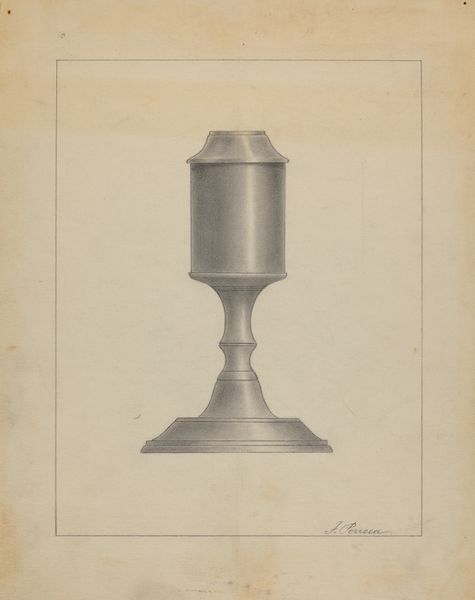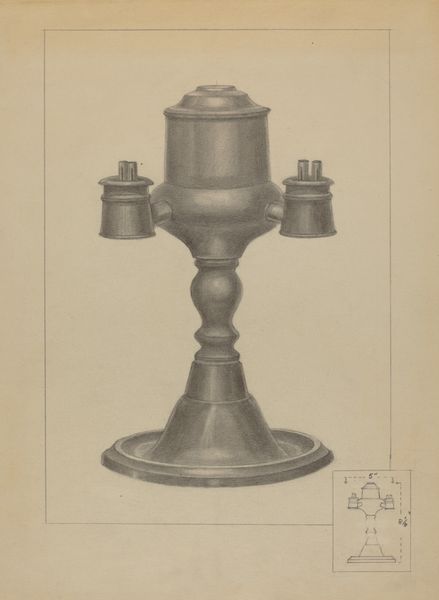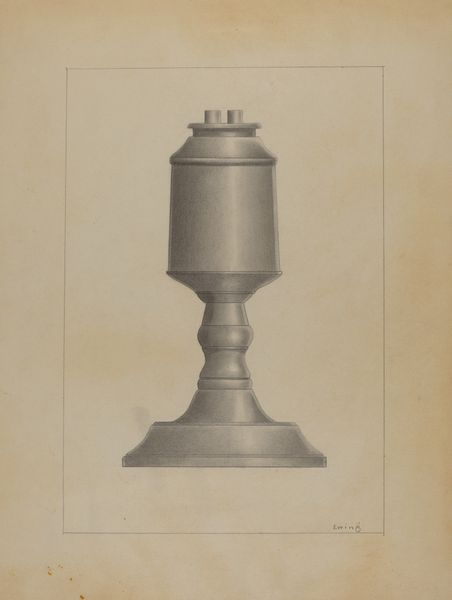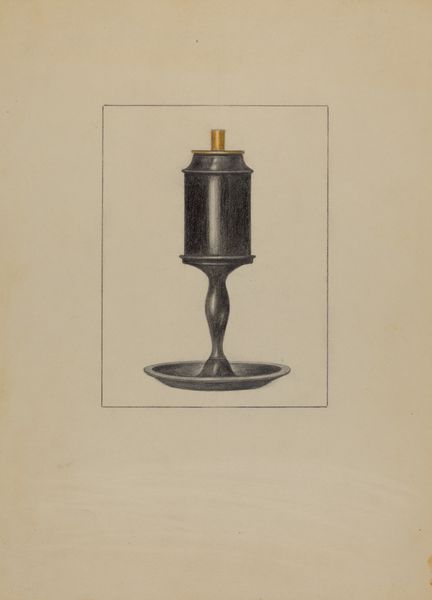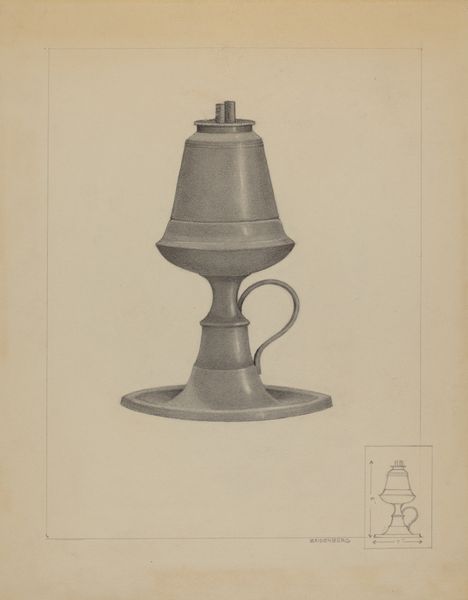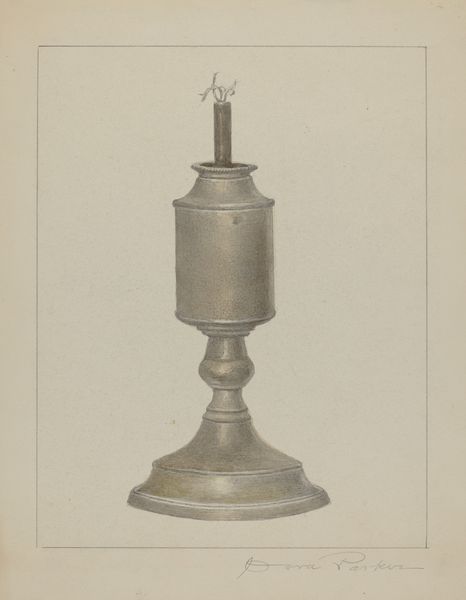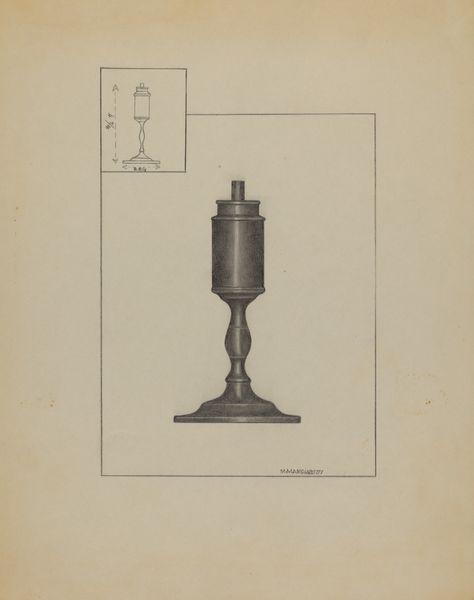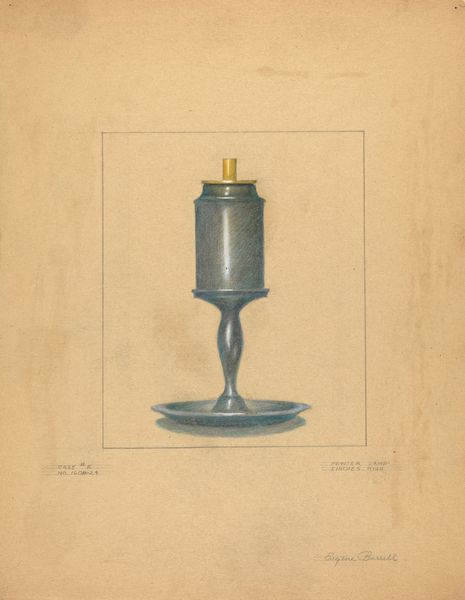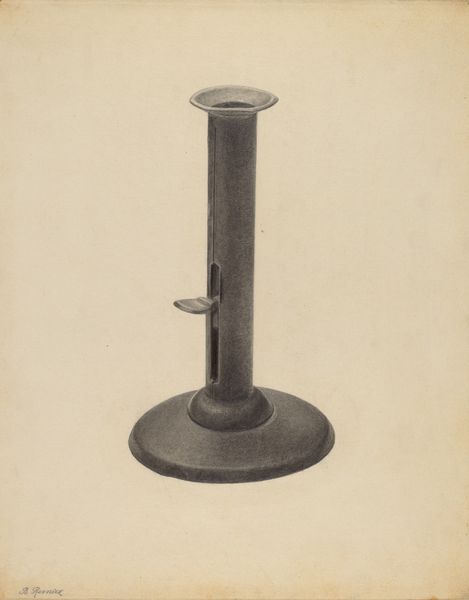
drawing, pencil
#
pencil drawn
#
drawing
#
aged paper
#
toned paper
#
light pencil work
#
pencil sketch
#
light coloured
#
personal sketchbook
#
pencil drawing
#
pencil
#
pencil work
#
tonal art
#
realism
Dimensions: overall: 29.4 x 22.8 cm (11 9/16 x 9 in.)
Copyright: National Gallery of Art: CC0 1.0
Curator: This drawing, entitled "Whale Oil Lamp", was created by Arsen Maralian around 1936. It’s rendered in pencil on what appears to be toned paper. Editor: My first thought is austerity. There’s something very simple and utilitarian about its stark form against the aged, light-colored ground of the paper. Curator: I see a lot in that utilitarian form. Think of the whale – a powerful symbol of both the bounty and brutality of nature. To burn its oil was to harness a potent force, a real statement of human will over the natural world. Editor: And a real material dependency, of course. Consider the global reach of the whaling industry at the time. The construction of the lamp itself, the processes for refining the oil, the markets where it was sold – an intricate web of labor and commerce, all fueled by this… fat. Curator: True, and let’s not forget the darkness it was meant to dispel. Light, for millennia, has been a powerful metaphor for knowledge, hope, even the divine. A lamp like this isn’t just practical; it’s symbolic, promising clarity in a world that could often feel very dim. Editor: Symbolism is always grounded in materiality. Think about the very *texture* of whale oil - greasy, pungent, quite unlike the cleaner fuels we're used to now. Its illumination would have been linked, in people’s minds, to the visceral experience of where it came from. Curator: A good point, it’s a stark contrast to the electric lightbulb, that's for sure. It makes me consider this drawing’s origins in the 1930s, a period where such technologies would have co-existed, each illuminating different aspects of life and labour. Editor: Absolutely, seeing this now really highlights that complicated transition period between older, more laborious, processes and modern conveniences. I can't help but see the labor involved just by considering its reliance on older technologies. Curator: Ultimately, whether one sees it as an emblem of ambition or a relic of a bygone economy, it certainly provides a focal point, throwing a new type of *light* on our interpretations. Editor: And maybe prompts us to question what we now illuminate in contrast, with our technologies and their processes.
Comments
No comments
Be the first to comment and join the conversation on the ultimate creative platform.
